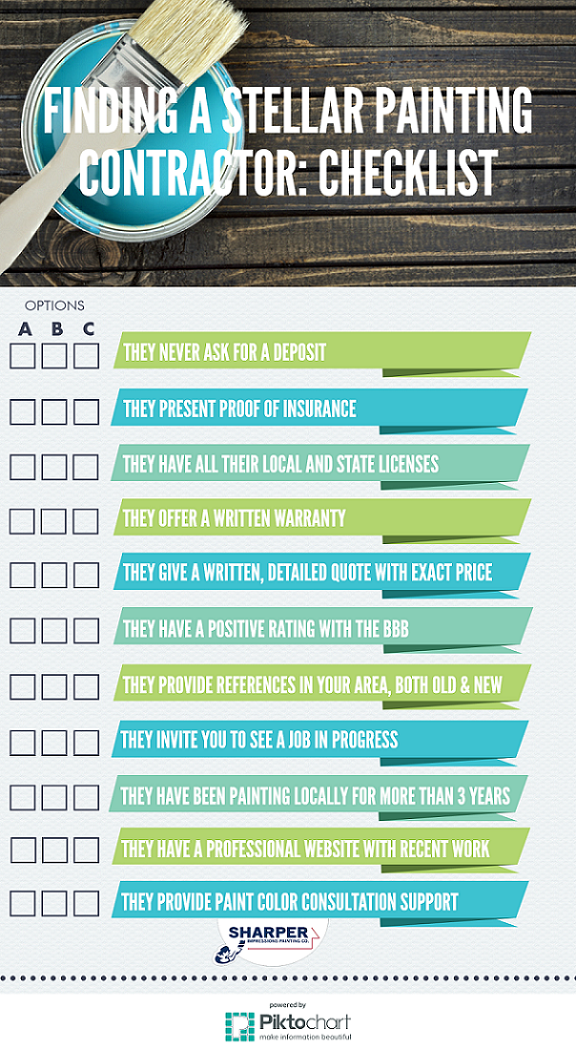Investigate The Function Of Seasonal Factors In The Success Of Industrial Outside Paint And Discover The Very Best Times To Protect Long Lasting Results For Your Job
Investigate The Function Of Seasonal Factors In The Success Of Industrial Outside Paint And Discover The Very Best Times To Protect Long Lasting Results For Your Job
Blog Article
Post By-Leach Skafte
When you're planning a commercial exterior paint job, seasonal aspects can make or damage your outcomes. You'll intend to take into consideration exactly how temperature level and moisture impact paint application and drying times. Picking why not try these out can guarantee your paint sticks correctly and lasts much longer. But which seasons are really the most effective for this kind of work? Allow's check out the crucial elements that can affect your job's success.
The Influence of Temperature Level on Paint Application
When you're planning an industrial exterior paint task, the temperature can dramatically affect just how well the paint sticks and dries out.
Preferably, you intend to paint when temperature levels range between 50 ° F and 85 ° F. If it's too cold, the paint may not treat effectively, bring about problems like peeling or splitting.
On the other hand, if it's too warm, the paint can dry too promptly, stopping proper bond and resulting in an uneven finish.
You should additionally consider the moment of day; early morning or late afternoon provides cooler temperatures, which can be extra desirable.
Always inspect the producer's referrals for the certain paint you're utilizing, as they typically give guidance on the ideal temperature array for optimal outcomes.
Humidity and Its Impact on Drying Times
Temperature isn't the only environmental factor that affects your commercial exterior paint job; humidity plays a considerable role also. High humidity levels can slow down drying times considerably, influencing the total top quality of your paint work.
When the air is saturated with wetness, the paint takes longer to cure, which can bring about concerns like inadequate adhesion and a higher danger of mold development. If you're repainting on a specifically moist day, be planned for prolonged wait times between coats.
It's essential to monitor neighborhood weather conditions and plan appropriately. Ideally, go for humidity degrees between 40% and 70% for optimal drying.
Maintaining these factors in mind ensures your task stays on track and supplies a long lasting coating.
Best Seasons for Commercial Exterior Paint Projects
What's the best time of year for your industrial external painting tasks?
Springtime and very early loss are commonly your best options. Throughout these seasons, temperature levels are light, and humidity levels are usually reduced, developing perfect conditions for paint application and drying out.
Stay clear of summertime's intense heat, which can trigger paint to dry also promptly, causing bad adhesion and surface. Likewise, winter months's chilly temperature levels can prevent proper drying out and treating, taking the chance of the long life of your paint task.
Go for days with temperature levels in between 50 ° F and 85 ° F for ideal outcomes. Bear in mind to examine the neighborhood weather prediction for rainfall, as damp problems can wreck your job.
Planning around these variables guarantees your paint job runs smoothly and lasts longer.
Final thought
Finally, planning your business exterior paint tasks around seasonal considerations can make a considerable distinction in the end result. By scheduling job during the ideal temperature levels and humidity levels, you'll make sure better attachment and drying out times. Bear in mind to watch on regional weather report and choose the right time of year-- springtime and early loss are your best bets. Taking https://garrettmsydj.fare-blog.com/35212868/navigating-color-choice-a-strategic-guide-for-commercial-outside-paint will aid you accomplish a resilient and specialist coating that lasts.
